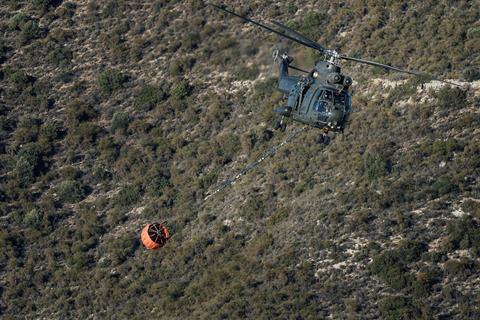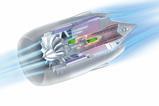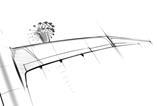Airbus Helicopters has defended its decision to pull out of the UK’s New Medium Helicopter (NMH) contest without submitting a bid, with one executive hitting out at the size of the budget and a perceived failure to follow through on social value commitments.
Bruno Even, chief executive of the French airframer, says that after a detailed assessment of the tender released in February by the UK Ministry of Defence (MoD) “we came to the conclusion that we were not in a position to formulate a proposal”, that could match the customer’s requirements, “provide a long-term return to the business” and “at the same time give us a chance to win”.

Airbus Helicopters had been shortlisted for the contest alongside Leonardo Helicopters and Sikorsky and was working to a 30 August deadline for bid submissions.
But just hours before the deadline, both Airbus Helicopters and Sikorsky announced they would not be responding to the tender, leaving their Anglo-Italian rival and its AW149 as the sole contender.
Airbus Helicopters had proposed its H175M for the requirement, which would have been built using a new assembly line at Broughton in North Wales; output from the plant would also have been destined for the export market.
While Even is relatively diplomatic about the tender, Lenny Brown, managing director of Airbus Helicopters UK, offers a more forthright opinion.
Brown, a former chief of the UK’s Commando Helicopter Force, says the £1 billion ($1.3 billion) budget allocated for the procurement – covering 23-32 airframes plus training and support – was “not enough to deliver what they wanted in the time they wanted it”.
In comparison, Poland is buying a fleet of 32 AW149s for a total of €1.8 billion ($2 billion), which includes a similar training and support package.
The NMH contest was also meant to showcase the MoD’s commitment to obtaining social and industrial value from defence acquisitions but Brown feels the tender did not match that ambition.
“We could not deliver on those parameters because of the scoring mechanism,” he says.
Additionally, he feels the tender documents were not tightly worded enough to prevent bidders from ‘gaming’ the process, especially around the issue of potential exports from the UK.
Stressing his disappointment that the company felt it could not bid, he adds: “We had such a good solution. It would have delivered exactly on the things we were saying it would do.”
Selection of the H175M for NMH would have positioned the UK as the “launch customer for the [type’s] global export campaign”, which would have seen hundreds of aircraft “exported and supported” from Broughton.
Even stresses the decision to pull out is not an indication that “we do not believe the H175M is the right product and do not believe that we have the right proposal in terms of industrial set up”, he says.

“We are just observing that we are not the only one deciding to withdraw,” he adds, noting that the move was also driven by “questions of credibility” as “we didn’t want to be in a position to commit to things that we thought we would not be able to match”.
Both executives were speaking on 12 September as Airbus Helicopters opened its new UK headquarters, a £55 million investment at Oxford airport.
At the outset, the NMH programme was designed to replace five platforms in UK service, the most numerous of which are the 23 Puma HC2s flown by the Royal Air Force.
With a Strategic Defence Review now being undertaken by the new Labour government and the MoD still formulating the latest iteration of its rotary-wing strategy, there is no guarantee the NMH procurement will proceed.
Should that be the case, the Pumas will need to soldier on beyond the current 2025 out-of-service date.
Even says the fleet – which was upgraded last decade by Airbus Helicopters to the HC2 standard – “can continue to fly until 2035” if required.
“We are committed to continue to support them. We are open for discussion,” he says.
Although Even insists no changes are required to extend their service life, Brown says the company has developed an “obsolescence plan”, albeit that it is “not massive”.
Indeed, he suggests that even in its current guise the Puma could deliver 85% of the NMH requirement, “but with some modifications it could deliver 90% of what NMH was asking”.
At present, the Pumas are deployed to Brunei and Cyprus, backfilling for the now-retired Bell 212s and 412s that were originally due to be replaced by the winner of NMH. But earlier this year, the MoD announced it was instead procuring six H145s to cover those missions.
Wing Commander Nick Monahan, head of the Puma Force, points out that no decision has been taken to operate the HC2 fleet for longer than currently planned.
“The funded out-of-service date is March 2025 with an option still under consideration to extend to September 2026,” he says.
While noting that the Puma is 53 years old, he says it is “doing its job extremely well in both locations because it’s still an excellent platform”.
This has included fire-fighting missions in Cyprus and performing “40-plus medevacs” in Brunei. “It is still delivering effect across the world,” he says.
But a “draw-down plan” is in place ahead of the arrival of the new H145s; delivery of the light-twins is due “very shortly”, says Airbus Helicopters.































